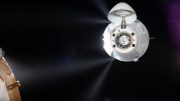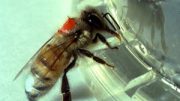
New research from Cornell University reveals that the visual system, not just chemical receptors, significantly influences social behaviors in male fruit flies. This study, which found that enhanced visual input can override usual social inhibitions, has implications for understanding similar mechanisms in the human brain, particularly in relation to conditions such as autism and schizophrenia.
Male fruit flies typically display antisocial behavior towards other males, preferring the company of females, which they identify through chemical receptors. However, recent studies by biologists at Cornell University indicate that the visual system of fruit flies plays a significant role in their social interactions.
This discovery provides new insights into the potential roots of varied social behaviors in humans, including those associated with conditions like bipolar disorder and autism.
The paper was recently published in Current Biology.
Visual System and Social Behavior
Many species of animals use vision to regulate their social behaviors, but the underlying mechanisms are largely unknown. In fruit flies, vision is thought to be used explicitly for motion detection and following, not to regulate social behaviors – but the researchers found that may not be the case.
“In our study, we found that hyperactivating the visual system overran the inhibition generated by chemical signals emitted by the male fly to say to the other male, ‘Okay, you know, I’m another male, don’t mess with me,’” said senior author Nilay Yapici, assistant professor of neurobiology and behavior. “Surprisingly, increasing the visual gain in the brain somehow overrides the chemosensory inhibition, attracting male flies to other males.”
The researchers found that altering the GABARAP/GABAA receptor signaling in visual feedback neurons in the male brain affected the flies’ social inhibitions. When GABARAP is knocked down in the visual system, the males unexpectedly exhibit increased courtship toward other males.
The researchers have found that genes similar to those in the human brain control the fruit fly’s visual neurons. Decreasing GABA signaling in the human brain has been associated with social withdrawal characteristics in conditions such as autism and schizophrenia.
“Our results offer a promising avenue for investigating how these proteins regulate social behaviors in the mammalian brain and their potential contribution to human psychiatric conditions,” said lead author Yuta Mabuchi, Ph.D. ’23.
Reference: “Visual feedback neurons fine-tune Drosophila male courtship via GABA-mediated inhibition” by Yuta Mabuchi, Xinyue Cui, Lily Xie, Haein Kim, Tianxing Jiang and Nilay Yapici, 5 September 2023, Current Biology.
DOI: 10.1016/j.cub.2023.08.034









Be the first to comment on "New Research Sheds Light on Origins of Social Behaviors"